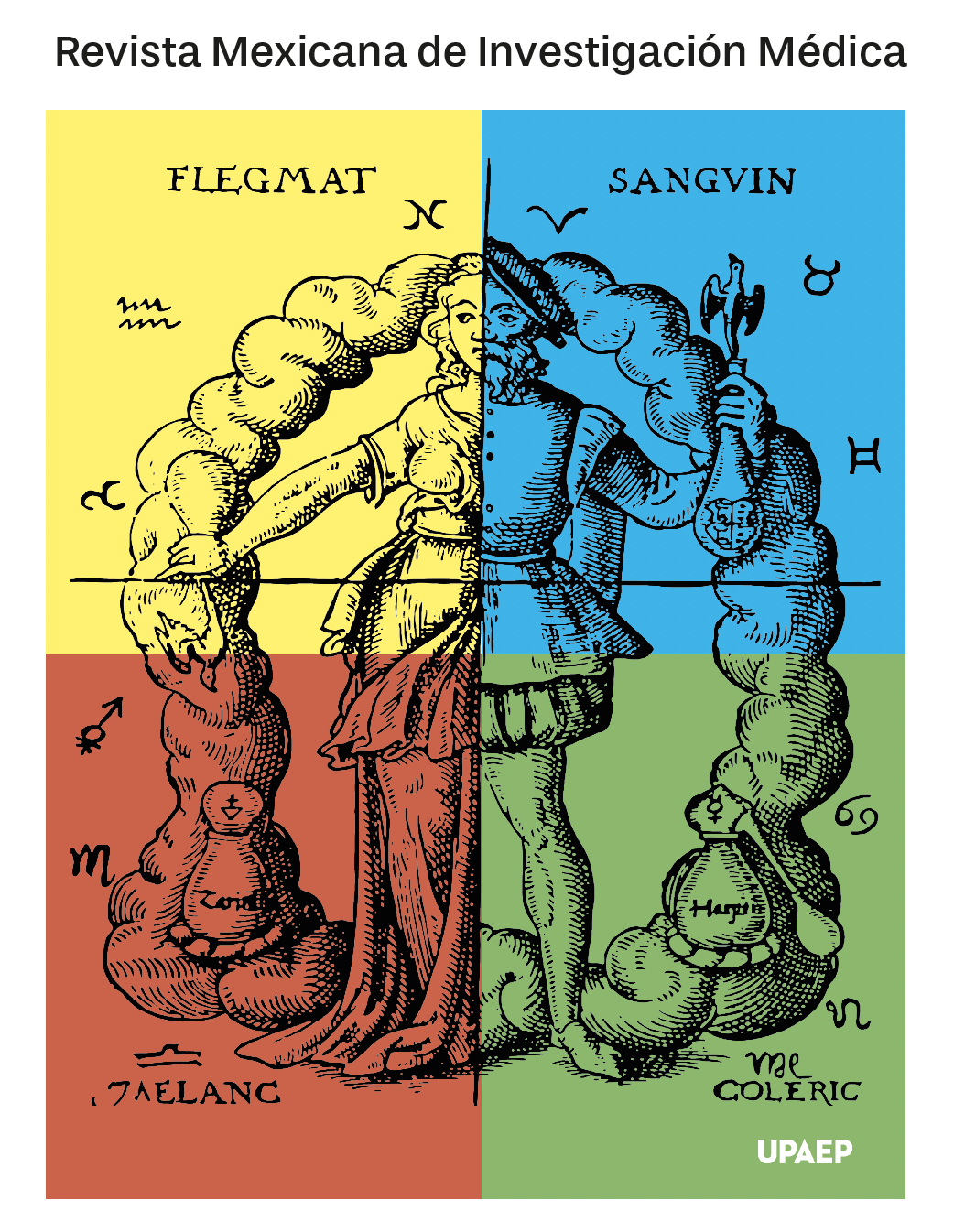Pathogens associated with hemodialysis catheter infections in patients with chronic kidney disease treated at the ’nephrology and dialysis’ clinic in querétaro; january 2022 - june 2023
Keywords:
Hemodialysis, Bacteremia, Chronic Kidney Disease, Catheter, PathogenAbstract
In Mexico, the number of patients with kidney disease is increasing due to the fact that chronic degenerative diseases such as arterial hypertension and diabetes mellitus are common. In the long term, and when not adequately controlled, they condition the onset of Chronic Kidney Disease (CKD). End-stage CKD requires renal replacement therapy (RRT) either in peritoneal dialysis (PD) or hemodialysis (HD). Central venous catheter (CVC) placement is necessary for RRT with HD as it allows rapid access to the bloodstream. The main complication and cause of morbidity and mortality documented in HD patients is bacteremia (CRB). The objective of the present study was to review blood culture results in CVC for HD documented in the internal registry created by CODECIN (Committee for the Detection and Control of Nosocomial Infections) in a clinic in Querétaro. The methodology was analytical, cross-sectional, retrolective, and descriptive. A total of 337 catheters were analyzed and 207 blood cultures were obtained with suspected CRB associated with tunneled (permanent) and temporary catheters. The predominant microorganisms isolated were Gram positive: S. aureus 34.8% (72), S. epidermidis 17.9% (37), S. lugdunensis 2.9% (6). The type of catheter most affected by CRB (according to site of placement) was the right jugular temporal catheter with a total of 49.3% (102), the most affected sex was male, the month with the highest incidence was June 2023, and the most frequent age was 49-58 years.
References
Instituto Mexicano del Seguro Social. Prevención, Diagnóstico y Tratamiento de las Infecciones Relacionadas a Líneas Vascu-lares. Guia Pract Clin. 2018;27. [Citado el 12 de noviembre 2023]
Orozco JAT y Quirós HSL. La Enfermedad Renal Crónica [Internet]. Enfermedad renal crónica en México: una política na-cional todavía pendiente. 2016 p. 1–98. [Citado el 12 de noviembre 2023] Available from: https://www.kidney.org/node/25520.
Ramón Abal YA. Autocuidado de pacientes con insuficiencia renal crónica en tratamiento de hemodiálisis en el centro ne-frológico los Cipreses– Lima, 2019 [Internet]. Repos Univ Priv Norbert Wiener [Internet]. 2020;[Citado el 13 de mayo del 2023] Available from: https://repositorio.uwiener.edu.pe/bits-tream/handle/123456789/4468/T061_46547325_S.pdf ?sequen-ce=1&isAllowed=y.
Instituto Nacional de Salud Publica. 5296-Enfermedad-Re-nal-Cronica-Mexico @ Www.Insp.Mx [Internet]. 2019; [Citado el 3 de marzo del 2023]. Available from: https://www.insp.mx/avisos/5296-enfermedad-renal-cronica-mexico.htm.
Gómez González K. La Insuficiencia renal crónica: paciente sometido a hemodiálisis [Internet]. 2018; [Citado el 14 de no-viembre del 2022] 24–9. Available from: https://repositorio.unican.es/xmlui/bitstream/handle/10902/15371/Gómez Gonzá-lez%2C Kimberly Adline.pdf ?sequence=1&isAllowed=y.
Lorenzo SV, López G,JM. Principios Físicos en Hemodiálisis.En: Lorenzo V., López Gómez JM (Eds). Nefrología al día. ISSN: 2659-2606. [citado 23 de Abril de 2023] Disponible en: https://www.nefrologiaaldia.org/188.
Aquiles JC. Calcificaciones vasculares en pacientes con in-suficiencia renal crónica. Rev Médica Clínica Las Condes. 2012;23(6):715–23.
Witt SH, Carr CM. Dispositivos de acceso vascular perma-nentes: acceso y manejo de emergencia. 2023
Amenós AC. 99 - Hemodiálisis y diálisis peritoneal [Internet]. 19th Editi. Farreras Rozman. Medicina Interna. Elsevier Es-paña, S.L.U.; 2023 [Citado 4 de Diciembre 2022] p. 844–848. Available from: http://dx.doi.org/10.1016/B978-84-9113-545-6/00099-5.
Giamarellos-bourboulis J. La compleja patogenia de la bacterie-mia. 2014;57–65.
Aguinaga A, Pozo JL. Infección asociada a catéter en hemo-diálisis: diagnóstico, tratamiento y prevención | Nefrología [Internet]. 2011;(Cvc):1–10. [Citado el 10 de octubre de 2022] Available from: https://www.revistanefrologia.com/es-infec-cion-asociada-cateter-hemodialisis-diagnostico-tratamien-to-prevencion-articulo-X1888970011001035.
Kriegel I, Dupont C, Marcy PY, Ayadi S, Albert O, Vanjak D, et al. Accesos venosos percutáneos en el paciente adulto. EMC - Anestesia-Reanimación. 2019;45(2):1–21.
Donati G, Spazzoli A, Croci Chiocchini AL, et al. Bloodstream infections and patient survival with tunneled-cuffed catheters for hemodialysis: A single-center observational study. The In-ternational Journal of Artificial Organs. 2020;43(12):767-773. [Internet]. [citado 17 de abril de 2024];Disponible en: https://journals.sagepub.com/doi/10.1177/0391398820917148:
Hidalgo-Blanco MA, Moreno-Arroyo MC, Sánchez-Ortega MA, Prats-Arimon M, Puig-Llobet M. Análisis de las com-plicaciones del acceso vascular en hemodiálisis. Una revisión sistemática. Enferm Nefrol 2023;26(2):106-18 ]. [citado 17 de abril de 2024].
Poinen K, Quinn RR, Clarke A, Ravani P, Hiremath S, Mi-ller LM, Blake PG, Oliver MJ. Complications From Tunneled Hemodialysis Catheters: A Canadian Observational Cohort Study. Am J Kidney Dis. 2019 Apr;73(4):467-475. doi: 10.1053/j.ajkd.2018.10.014. Epub 2019 Jan 12. PMID: 30642607.]. [citado 17 de abril de 2024]
Ecevit AN, Karaca OG, Kalender M, Darçin OT. Infec-tion rate of tunneled hemodialysis catheters. Duzce Med J 2021;23(1):55–60.]. [citado 17 de abril de 2024]
Almenara-Tejederas M, Rodríguez-Pérez MA, Moyano-Fran-co MJ, de Cueto-López M, Rodríguez-Baño J, Salgueira-Lazo M. Tunneled catheter-related bacteremia in hemodialysis pa-tients: incidence, risk factors and outcomes. A 14-year obser-vational study. J Nephrol. 2023 Jan;36(1):203-212. [citado 17 de abril de 2024] Disponible en: 10.1007/s40620-022-01408-8.
Lima CS, Vaz FB, Campos RP. Bacteremia and Mortality among Patients with Nontunneled and Tunneled Catheters for Hemodialysis. Int J Nephrol. 2024 Feb 6;2024:3292667. [ci-tado 17 de abril de 2024] Disponible: 10.1155/2024/3292667
Yaqub S, Abdul Razzaque MR, Aftab A, Siddiqui NA. Outco-mes of tunneled cuffed hemodialysis catheters: An experience from a tertiary care center in Karachi, Pakistan. J Vasc Access. 2022 Mar;23(2):275-279. [citado 17 de abril de 2024] Disponible en: 10.1177/1129729821989904.
Downloads
Published
Issue
Section
License

This work is licensed under a Creative Commons Attribution-NonCommercial-ShareAlike 4.0 International License.



